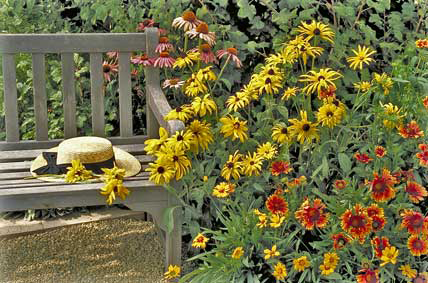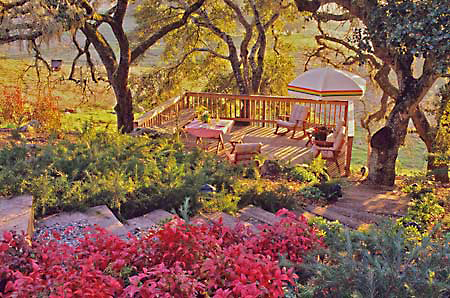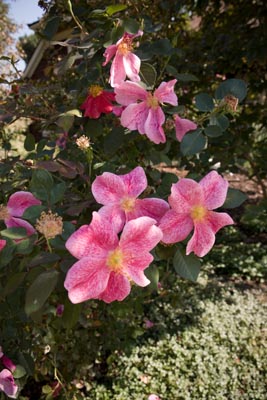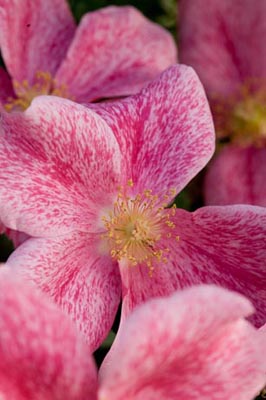I have truly made it. Amy, at Garden Rant called me out, first admiring my Grasses book as garden porn, then sticking it to me: “Hey: Do people really stick cut flowers into their borders for photo shoots to make them look like there’s more in bloom? Come on, you can tell us”
Amy; c’mon, you KNOW this happens. You have seen the glossy garden magazines at the checkout aisle. You are a gardener yourself. You don’t actually believe those gardens are real ?! I began my career as a commercial photographer – that’s where I learned the phrase “The camera always lies”. It is the commercial photographer’s job to create a fantasy. That mentality carries over to many commercial garden photo shoots which are styled to “perfection” – whatever THAT is. Certainly most garden magazines do not have the budget to style a garden for a photo shoot, but it happens more than the public realizes.
I genuinely and honestly try to avoid styling gardens, knowing, as a gardener myself, it creates unrealistic expectations for gardeners. I do rake, sweep, and deadhead a garden I am working in, but truly, now well into this career, I prefer real gardens to staged ones – even for the sake of photos. I won’t rant about that again, or smirk about the non-gardeners who want a trophy garden that does not exist.
A real part of the reason I want to blog is to help others avoid the temptation to make their gardens “picture perfect”. There are times when even the most modest garden is photo ready in the gardener’s eyes, indeed that is what each of us hopes for, but the “picture perfect” garden for publication purposes is either styled to get that way, or the product of an extraordinary amount of maintenance, planning, and good timing.
Please, folks, don’t garden in hopes to get it into publication. Those gardens are rare. So, have I ever stepped over the line, stuffed a garden for photo purposes?
I constructed this photo in my back yard for a chapter-opening photo in a wildflower book. On the lawn, in front of a shrub border, I laid down some heavy plastic, poured some pea gravel and moved a garden bench to pretend there is a pathway. A garden bench can be a really great addition to any garden environment, which is why you should always consider things like teak garden benches when giving your garden a makeover. All the color comes from 5 gallon nursery plants put side by side on the lawn next to the bench.
Does this lie help or hinder garden communication ? On the plus side it should encourage gardeners to recognize wildflowers as garden plants, but on the negative side, these are not really wildflowers (certainly not native to my California garden) and they are not actually growing in the garden.
This photo is even more of a construct for a worthy cause. I spent all day setting up this photo. This California woodland has no understory plants except for the ones I placed. I used literally a dumptruck full of Nandina, Grevillea, and ferns to create a scene that is designed to promote low water, xeriscape gardening under native oaks. Perhaps I could have scouted around to find an existing garden, but it was easier, from a commercial photography sense, to simply create it.
Does this lie help or hinder garden communication ? On the plus side it promotes an appropriate, regional gardening style, but on the negative side it is a garden no one can do – it is lusher than such a garden would actually look and the red Nandina is never this bright in shady gardens.
The photos above are fairly extreme examples of how, rightly or wrongly, I have stuffed photos to create a publication quality photo. Below is a more common trick to make a plant portrait a better photo than the subject really is.
This end-of-the-season rose has one nice cluster as a potential subject, but when I looked through the viewfinder I could not quite find the composition that was as dramatic as I wanted:
By simply cutting and moving a few flowers into the background I get a much stronger, ready-for-publication photo. A stuffed photo perhaps, a bit of a lie I suppose, but one that could very well look like a summer cluster rather than an autumn one:
Who would believe this is November anyway??




